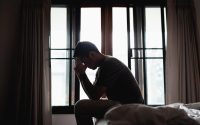Majority of college students have a mental illness: study
College students already juggle school, work, friends, hormones — and in comes a new challenge: navigating mental healthcare.
Researchers at Boston University recently revealed some staggering findings — that depression among college students increased by nearly 135% over eight years, while anxiety surged 110%.
Unfortunately, those rates have well outpaced the demand for available and affordable mental health services, they said.
“Living in a new setting and away from home can often create overwhelming and stressful circumstances, and recently we’ve added the stress of the pandemic to the mix,” Sarah Lipson, a health policy professor at Boston University’s School of Public Health and the study’s lead author, told the Washington Post earlier this month — amid back-to-school season.
Lipson’s team also looked at rates of eating disorders, non-suicidal self-injury and suicidal ideation, which increased at rates of nearly 96%, almost 46% and 64% respectively. As for “flourishing,” rates decreased overall.
The study, published in the Journal of Affective Disorders in June, analyzed data from more than 350,000 students across 373 campuses, collected by the Health Minds Network between 2013 to 2021.
To no surprise, depression increased most on average during the COVID-19 pandemic. Between 2020 and 2021, over 60% of students met the criteria for at least one mental illness — double the rate of 2013.
In March, the World Health Organization announced that depression increased 25% globally due to the pandemic, adding support to BU researchers’ findings.
Furthermore, they noted a decrease in the rate of college students seeking help and mental health services, especially among racial and ethnic minorities.
The data concerned the study authors, who noted a 45% increase of one or more mental health problems among multiracial students, while past-year treatment seeking only grew 9% among the same group.

Similar mental health data has been reported by the Centers for Disease Control and Prevention, calling it a “cry for help” from young Americans.
The shocking numbers come at a time when good therapists are increasingly few and far between, according to the federal Health and Resource Service Administration. The agency has estimated that the US will be short 8,000 clinical, counseling and school psychologists by the year 2025.


